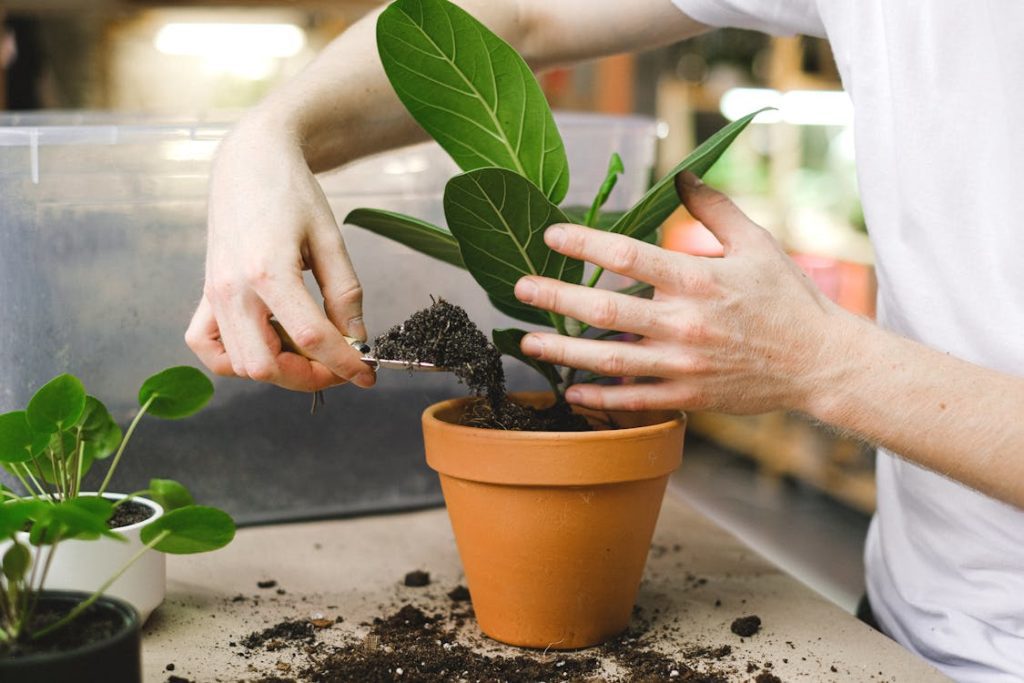Repotting your plant is an essential task to ensure its health and growth. Here’s a step-by-step guide to repotting your plant:
- Choose the Right Time: Spring is generally the best time to repot most plants because they are entering their active growing phase. However, if your plant is severely root-bound or showing signs of distress, you may need to repot it regardless of the season.
- Select a Suitable Pot: Choose a pot that is slightly larger than the current one. Make sure it has drainage holes at the bottom to allow excess water to escape. Using a pot with drainage prevents waterlogging, which can lead to root rot.
- Prepare the Pot: Clean the new pot thoroughly with water and mild soap to remove any debris or pathogens. You can also sanitize it with a diluted bleach solution (1 part bleach to 9 parts water) if necessary.
- Prepare the Plant: Water the plant a day or two before repotting. This will help reduce stress on the plant during the repotting process. If the plant is root-bound, gently loosen the roots at the bottom and along the sides using your fingers or a tool. This will encourage new root growth.
- Add Potting Mix: Fill the bottom of the new pot with fresh, well-draining potting mix. Use a mix appropriate for your plant type (e.g., cactus mix for succulents, orchid mix for orchids). Create a small mound in the center of the pot to support the plant.
- Repot the Plant: Carefully lift the plant out of its current pot, holding it by the base of the stem or the root ball. Place it in the center of the new pot on top of the mound of potting mix. Adjust the height of the plant so that the top of the root ball sits about an inch below the rim of the pot.
- Fill in with Potting Mix: Fill in the gaps around the root ball with fresh potting mix, pressing it gently to eliminate air pockets. Leave about an inch of space between the top of the potting mix and the rim of the pot to allow for watering.
- Water Thoroughly: After repotting, give the plant a thorough watering to settle the soil and help the roots adjust to their new environment. Allow excess water to drain out of the bottom of the pot.
- Place in Suitable Location: Put the repotted plant in a location that matches its light and temperature requirements. Avoid placing it in direct sunlight immediately after repotting, as this can increase stress on the plant.
- Monitor and Maintain: Keep an eye on the plant in the days and weeks following repotting. It may take some time for the plant to adjust to its new pot, so continue to water and care for it as needed.
By following these steps, you can successfully repot your plant and promote its growth and vitality.
